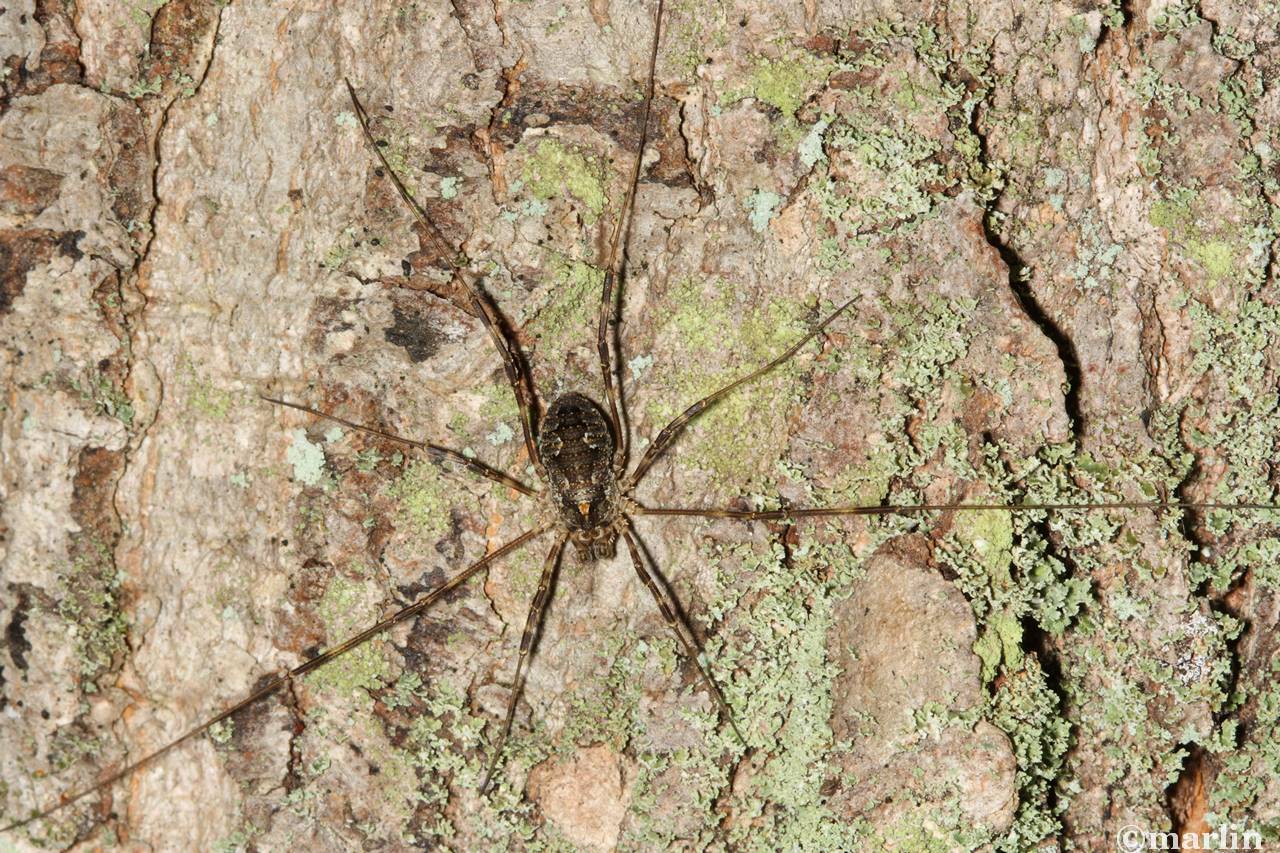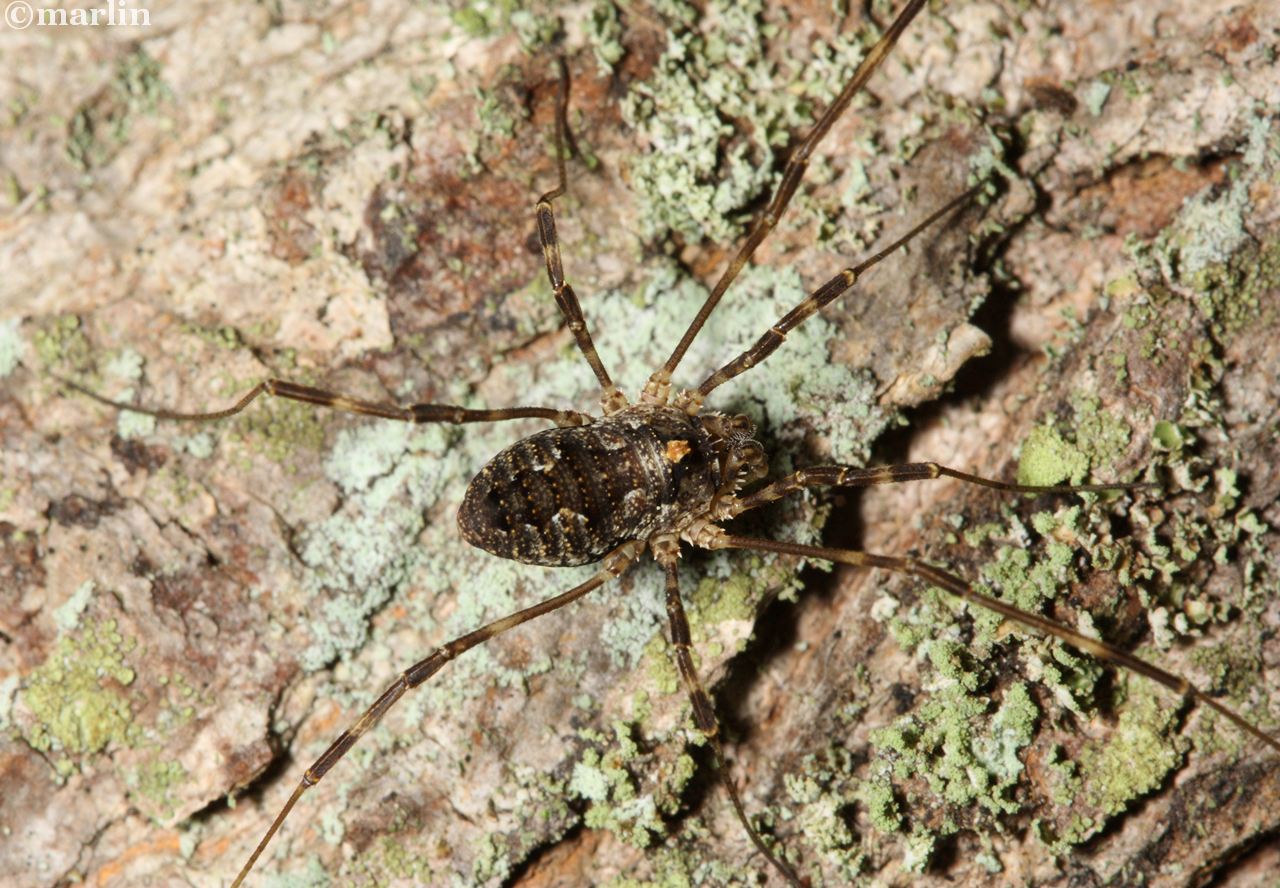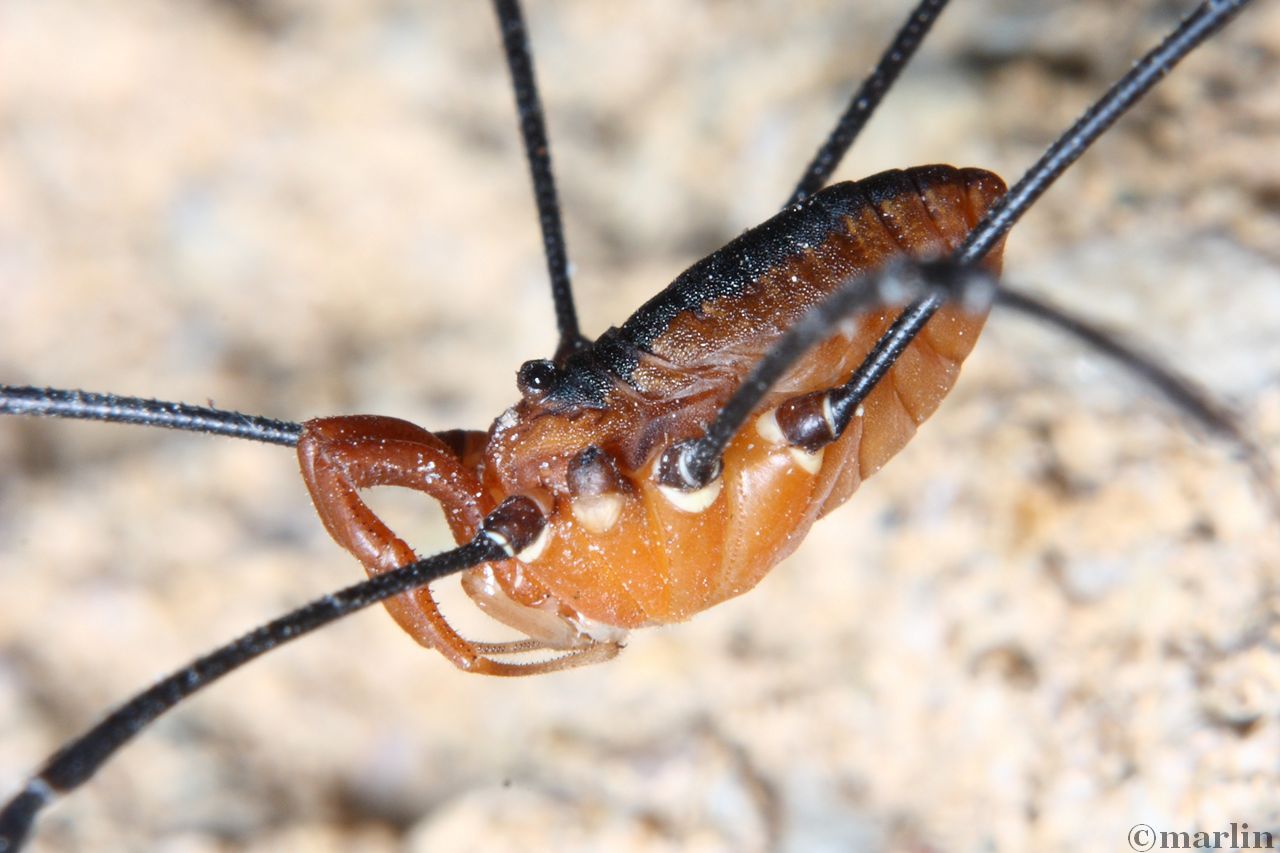Harvestman – Odiellus pictus

Class: Arachnida / Order: Opiliones
Live harvestmen and women photographed near Marienville, Pennsylvania

Found at twilight by headlamp: Harvestman presents menacing impersonation, complete with false eyespots.
About 1900 species of harvestmen are distributed over the world in forests, fields and other land habitats. They can and do walk on water. We have 60 or more species in North America and the adults of all but one of these die with the coming of winter. They mate in late summer and autumn. While the smaller male drives away rivals, the female lays a few eggs at a time in the soil, or in or under rotten wood. This is repeated until she becomes merely an empty shell. In spring the newly-hatched young are white miniature editions of the adults. They soon darken and, as they grow, shed their skins like many insects do. They eat a wide variety of animal food, both dead and alive, as well as vegetable matter and juices.
There is an old wives’ tale about the daddy longlegs being the “most venomous spider”, but the “fangs” are too short to pierce human skin, and harvestmen have no venom or venom delivery system, hence are completely harmless to man.

At the front are a pair of pedipalps, pincers used to grasp, tear and stuff food into its mouth, to fight other harvestmen, and to frequently clean its legs. Those seven-jointed legs are unique. If we had legs in proportion they would be 40 feet long.
Unlike the spiders (order Araneae), the abdomen of the harvestman is divided into segments, but it has no “waist”. Instead, the head, thorax and abdomen are grown together into a compact oblong body. They do not spin webs, or use silk or build nests. On top of the head is a black “turret”, a knob with a tiny eye on each side. Apparently, these primitive eyes can detect a moving object several feet away. I can tell you from my experience, they see me coming from at least 2 meters.

